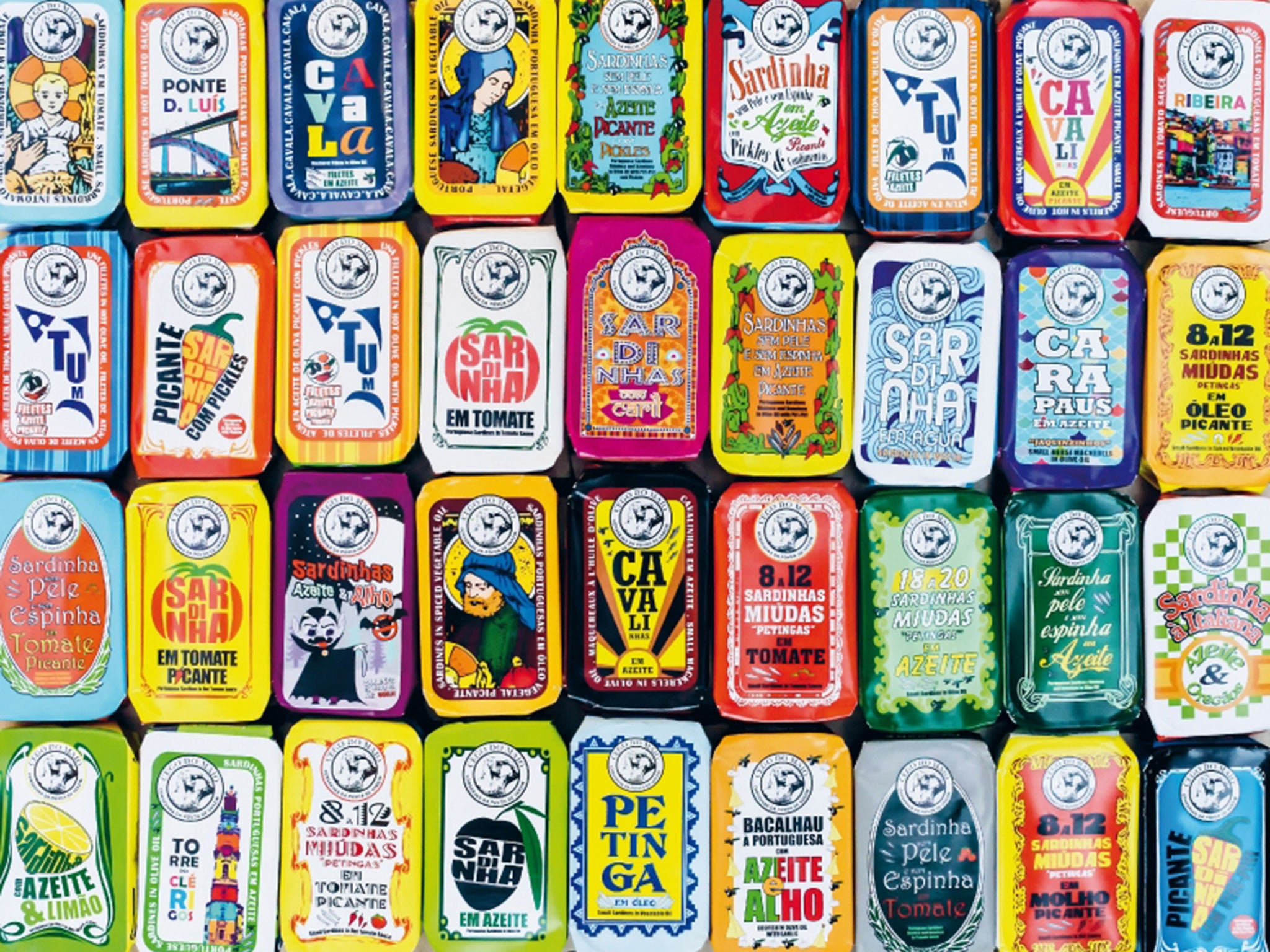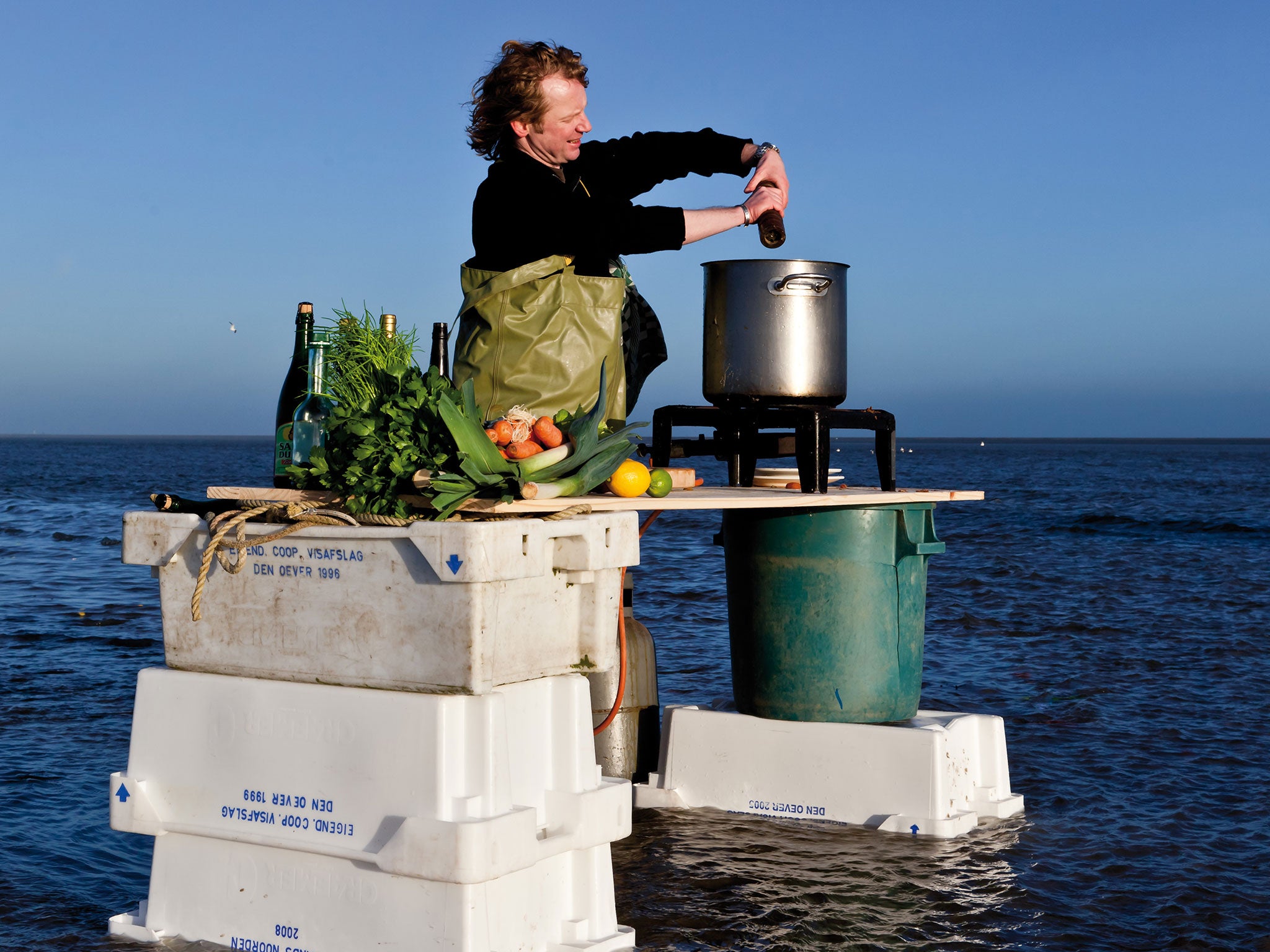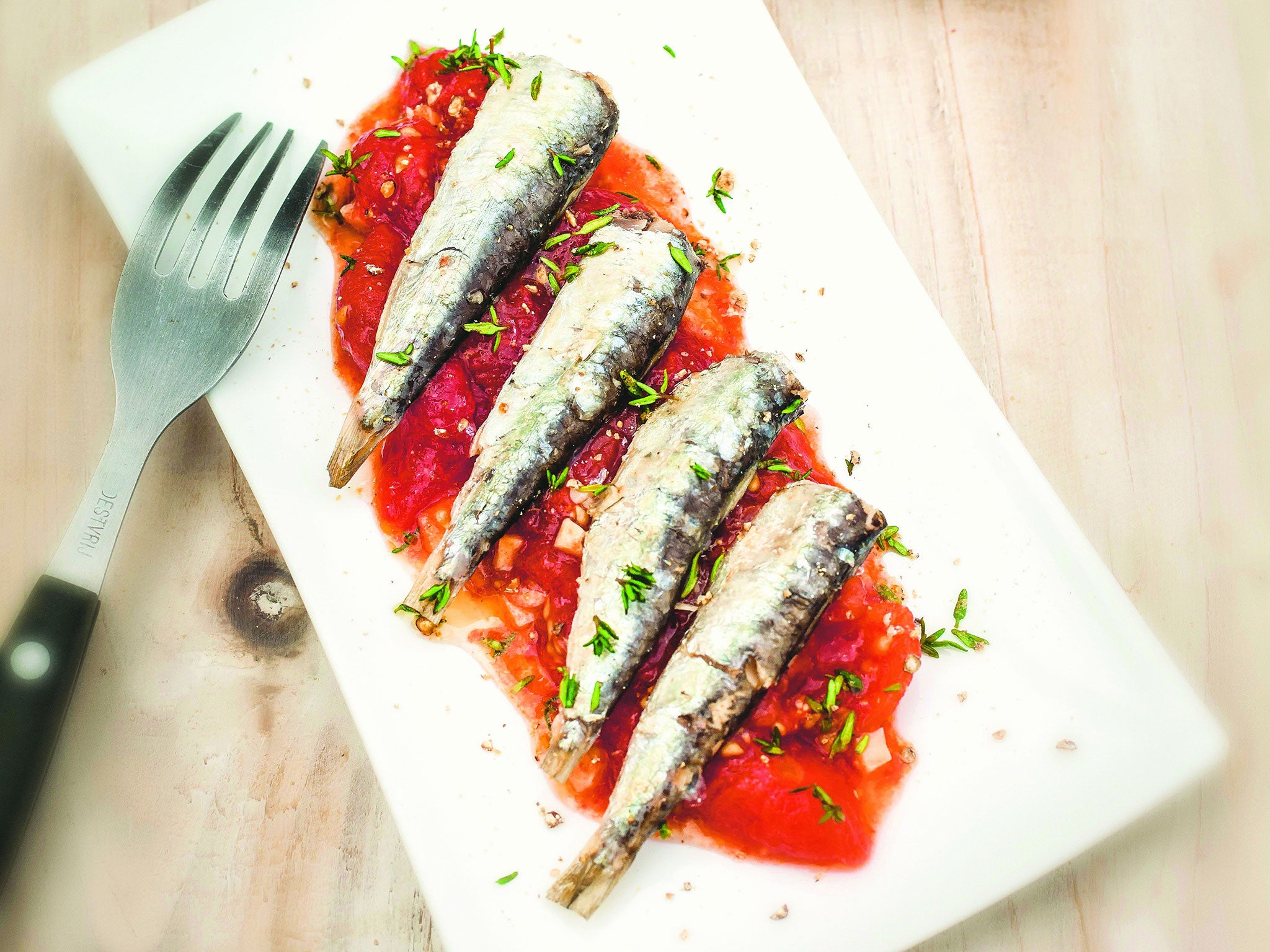How to cook with tinned fish: Chef Bart van Olphen creates home-cooked meals on a budget
Tins of pilchards, tuna or cockles are more than just store-cupboard staples. Pick the right ones and you can cook up a feast, says chef Bart van Olphen, whose book on the subject has become a surprise bestseller. Sophie Morris fishes for the facts

Your support helps us to tell the story
From reproductive rights to climate change to Big Tech, The Independent is on the ground when the story is developing. Whether it's investigating the financials of Elon Musk's pro-Trump PAC or producing our latest documentary, 'The A Word', which shines a light on the American women fighting for reproductive rights, we know how important it is to parse out the facts from the messaging.
At such a critical moment in US history, we need reporters on the ground. Your donation allows us to keep sending journalists to speak to both sides of the story.
The Independent is trusted by Americans across the entire political spectrum. And unlike many other quality news outlets, we choose not to lock Americans out of our reporting and analysis with paywalls. We believe quality journalism should be available to everyone, paid for by those who can afford it.
Your support makes all the difference.Bart van Olphen remembers his first time, speaking in a soft Dutch lilt and with more than a twinkle in his eye. It was in Brittany. "There was this beautiful lady called Marie," says the chef and food campaigner. "The idea was to make soup together, which we did, and then she gave me a beautiful tin of sardines. I was flying back to Amsterdam that night and promised to try them over the weekend."
"Mais non," protested Marie. He was to leave them to mature for at least two years, allowing the rich flavours of the Breton sardines to reach their peak of unctuous tastiness. It wasn't enough just to leave the can alone as the months went by, either. He was to cosset it through the seasons, turning it every few weeks to allow the fluids and aromas to circulate within the tin.
Van Olphen thought there had to be a story behind them. "Some 70 to 80 per cent of all tinned fish is rubbish," he admits. "But if you have good quality, you can make crazily nice things with it." It is easy to see the beauty in a large platter of fruits de mer or a whole sole in its transparent veil of beurre blanc. But a tin of tuna or pilchards? These foods are store-cupboard staples, emergency rations that became necessities during the Second World War and post-war years. They are not typically the type of ingredients to be lauded and end up the subject of a book, Cooking with Tinned Fish, Van Olphen's best-selling book yet.
"Bart is my fish hero – this book rocks!" enthuses Jamie Oliver from the book jacket. "I'm off to buy some tinned fish…" High praise from Jamie, who spotted the popularity of Bart's Fish Tales recipes and videos on Instagram and YouTube and invited him to join FoodTube, Jamie's network of foodie vloggers.
The book covers tuna, anchovies, mussels, salmon, mackerel, sardines, crab, cockles and herring. Each type of fish comes with the story of the sustainable fisheries Van Olphen has discovered, and glorious but simple recipes: courgette and fennel soup with cockles, crab salad with orange and fennel, anchovies with gnocchi and sage, salmon tartare with soft-boiled eggs and spring onion, sardines with confit thyme tomatoes.
Next time you're in a supermarket, take a moment and pause by the tins of fish. If you usually buy only tuna (make sure it's pole and line caught, stick to skipjack or sustainable albacore), you'll be amazed by the variety on offer. As well as more than 10 types each of tuna and salmon, you'll find mackerel, sprats, herring, sardines, pilchards (really just slightly bigger sardines), mussels, cockles, clams, squid... much of it of dubious provenance.
To ensure his fish comes from sustainable sources, Van Olphen travels the world, spending time with fishermen on their boats. He's a sucker for the romantic tale of the weather-beaten fisherman standing up to rough seas to bring a catch home to feed his hungry family.
As with Marie in Brittany, elsewhere on his travels he started to notice something about tinned fish. In Spain and Portugal, for example, such is the reverence for the best examples that you may need a special key to access the supreme types in a supermarket.
The striking designs on older tins have also played their part in the renaissance of tinned fish, and inspired new designers to put their own spin on tins – Portugal's Cego Do Maio (pictured) are too good to hide in the cupboard, while in the UK, Penzance's The Pilchard Works, a favourite of Hugh Fearnley-Whittingstall and Tom Parker Bowles, has put harbour scenes from classic local paintings on to the tins of its three types of sustainable sardines.

So in demand are different designs, and so varied and premium their fillings, that late last year a pop-up opened in London's Soho, Tincan, selling tinned fish alone. It sounds pretentious, but it opened consumers' eyes to wonderful canned delights that you won't find in your average British supermarket, including cod livers and urchin caviar. The food critics all loved it.
As it happens, Van Olphen peddles pilchards as well as stories. When he began to investigate sustainability, he realised that promoting sustainable tinned fish was one way of securing future stocks. His Fish Tales products – which come from Marine Stewardship Council-certified fisheries around the world, and are stocked in Waitrose – include Jack Webster's albacore, a high-quality white tuna from southern California, which was the world's first sustainable tuna fishery. But Van Olphen says there isn't really such a thing as a sustainable or an unsustainable fish; it's the methods of fishing that may, or may not, sustain stocks.
In the Maldives, Ali also fishes for tuna – skipjack – with a pole and line. Ali lives in one of the nation's most at threat from environmental change, but he still needs to fish. Dennis catches wild pink salmon off British Columbia. Poul is in Denmark and his mussels are smoked in oil. Mariano's anchovies come from Argentina and, while not quite tins, you can also buy bottles of Marie's fish soup.
"I try to get consumers interested in sustainability but not in a finger-pointing way," says Van Olphen. "Look at these fishermen and their lives. Look at how they catch their fish and what they do for it, and learn how you can cook delicious food with their products. You shouldn't have to ask the consumer if he knows which fish is sustainable. A brand or restaurant should do that work and be trustworthy."
The great thing about canning is that all the taste and the health benefits are preserved along with the fish, and no additives are necessary. It may come in spring water, brine, oil or a tomato-based sauce, and you should choose depending on what you're going to use it for. Tinned tuna loses some omega-3s in the canning process, so it is not considered an oily fish like fresh tuna, but other varieties retain all the nutrients. This does, however, depend on the method used at the cannery. The fish should be cooked first – canning fish in oil then blitzing it with heat is not the best idea.

Still, tinned fish sounds decidedly un-cheffy. Van Olphen met resistance from his publisher initially but, with the book on its fifth print run, he's proved his point. Chefs might not serve much tinned fish in high-end restaurants, but they drool over its promise for providing great home-cooked meals on a budget.
Restaurateur and fishmonger Mitch Tonks has just published a cookbook of recipes from his Dartmouth restaurant, The Seahorse. He uses fresh, local fish mainly, and tinned anchovies, but he admits that, off duty, little beats a slice of grilled sourdough topped with sardines, raw onion and vinegar. "I love tinned fish because it has such unique qualities," he says. "There's a stigma about it being cheap fish, but the Spanish do amazing things with tuna caught in season." He recommends whipping up a sardine paste by blending tinned sardines with butter, chilli and a few spices in a food processor, and leaving to set in the fridge.
Van Olphen trained as a chef and did time working in Michelin-starred kitchens in Paris. Back in Holland, he realised how few varieties were being eaten, started a fishmonger and supplied sustainable fish to shops and restaurants. He thinks that chefs should use their celebrity to change the way we eat, and that the few who have very great influence, such as Jamie and Heston, could really change the way we consume fish, keeping our oceans stocked for decades to come.
Still not sure? Don't forget that tinned fish is the freshest fish available. Van Olphen's fisherman in Porto, Ze Manel, comes in at midday and by 2pm his catch is canned. However, one recipe from Holland hasn't made it across to the UK version: it was decided we wouldn't have a taste for cod and haddock liver in orange and pomegranate.
Anyone ready to prove him wrong?
Cooking with Tinned Fish by Bart van Olphen (Pavilion) is out now, £12.99
SARDINES WITH CONFIT THYME TOMATOES
Serves 4 as a starter
Most dried garlic has a sulphuric smell, which is not good for this dish. Fresh garlic, also known as wet garlic, is available from July onwards. This garlic is milder in smell and taste compared to dried garlic and will not easily overpower a dish. The wet garlic is available until mid-December, due to a preserving method in oxygen-depleted cooling cells.
200g cherry tomatoes
Olive oil
8 garlic cloves, peeled and roughly chopped
A few sprigs of thyme, finely chopped
1 teaspoon balsamic vinegar
2 tins of sardines or sardinella in olive oil (120g each), drained
Sea salt and freshly ground black pepper
Cut the cherry tomatoes in half and remove the seeds.
Heat the olive oil in a large frying pan and place the tomatoes, cut-side down, into the pan. Add the garlic and a little thyme. Turn down the heat and leave the tomatoes to slowly absorb the flavours.
Once the skins are shrivelled and the cut side has coloured slightly, remove the pan from the heat and leave the tomatoes to cool.
Gently remove the skins from the tomatoes. This should be easy if the tomatoes are completely cooked. Crush the tomatoes with the garlic and olive oil. Season with the vinegar, salt and pepper.
Spoon the tomatoes on to plates, top with sardines or sardinella and sprinkle with a little more thyme, if you like.
Join our commenting forum
Join thought-provoking conversations, follow other Independent readers and see their replies
Comments